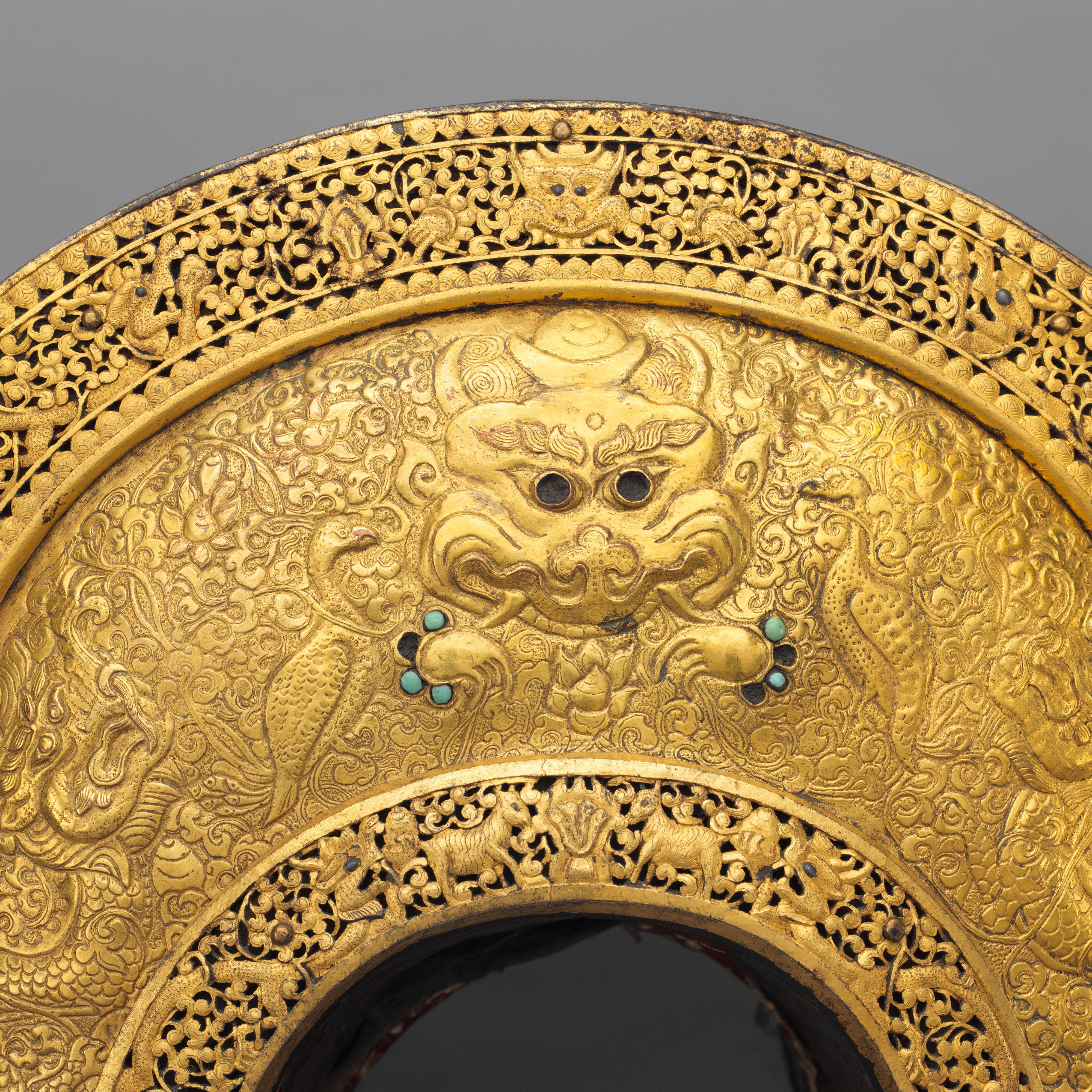Saddle, Saddle Pad, Stirrups, Rein, Stirrup Straps, Bit and Bridle, Breaststrap, Tassel, and Crupper
The central decorative feature of this intricate eighteenth- or nineteenth-centry Sino-Tibetan saddle is the kīrttimukha, or Face of Glory, a glowerng mask that recurs in various forms throughout the religious ornament of Tibet, China, India, and Indonesia. According to one story, the kīrttimukha was a lion-headed demon created by the supreme Hindu deity, Shiva, and served both as his doorkeeper and as a manifestation of his divine power. The kīrttimukha motif spread with the expansion of Hinduism and, like many other aspects of Hindu belief and art, was eventually incorporated into the Buddhist tradition and widely disseminated by it. In both religions it symbolizes the beneficence of dinive authority and protection from spiritual and physical dangers. The kīrttimukha was used ubiquitously as an auspicious sign to ward off evil.
On the saddle the kīrttimukha appears in the center of the large gilt-copper plaques mounted on the front and back, and also in the center of the uppermost pierced and chiseled iron border. It is surrounded by a rich array of equally meaningful sacred attributes, including, on the upper border, the triratna, or the Three Jewels. This symbol represents the triple foundation shared by all Buddhist sects: Buddha, the Enlightened One; dharma, his teachings; and sangha, the community of believers. Flanking the Three Jewels is the image of a dragon holding a pearl, a popular motif with roots in Taoist China. In Buddhism the pearl or single jewel stands for faultless purity and, therefor, the infallible truth of the religion's doctrine. The dragon acts as the jewel's heavenly guardian.
In the center of the lower pierced border is the cintāmaņi, or Wish-Granting Jewel, another example of the jewel motif frequently encountered in Buddhist art. It typically appears either as a cluster of elongated orbs or as a single tear-shaped sphere surrounded by an aureole of flames. The cintāmaņi is an augury of material prosperity and a symbol of the fulfillment of all wishes through the Buddha. The related concept of salvation attained through the teachings of the Buddha is represented by the pair of diminutive deer that flank the cintāmaņi and refer to the Deer Park at Sarnath, near Benares, in northeastern India, where Siddhārtha Gautama was said to have preached his first sermon.
The pierced borders of this saddle are reminiscent of Chinese metalwork but the embossed plaques call to mind the workmanship of eastern Tibet, suggesting perhaps that the saddle is composed of elements from both countries. The highly concentrated use of complementary religious symbols on a luxurious objects of this kind, however, was not unusual in the decorative arts of either imperial China or theocratic Tibet. The images can be appreciated individually, in the full depth of their meaning, or for their overall effect, simply as a compilation of talismanic ornament.
Due to rights restrictions, this image cannot be enlarged, viewed at full screen, or downloaded.
This artwork is meant to be viewed from right to left. Scroll left to view more.




